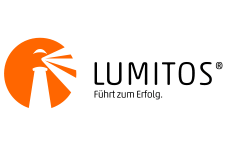Um alle Funktionen dieser Seite zu nutzen, aktivieren Sie bitte die Cookies in Ihrem Browser.
my.chemie.de
Mit einem my.chemie.de-Account haben Sie immer alles im Überblick - und können sich Ihre eigene Website und Ihren individuellen Newsletter konfigurieren.
- Meine Merkliste
- Meine gespeicherte Suche
- Meine gespeicherten Themen
- Meine Newsletter
254 Infografiken
rss| Sie können Ihre Recherche weiter verfeinern. Wählen Sie aus dem linken Bereich passende Suchfilter aus, um Ihre Ergebnisse gezielt einzugrenzen. |
Science Hits the Bar
Here’s the second in the series of graphics I’ve produced for my Pint of Science event at La Raza Cambridge (UK) in a few weeks’ time. Today’s graphic looks at how chemistry can help to make caviar and spheres in cocktails, and the chemical agents used to do it.
A functional group in chemistry is the part of the molecule that gives it its particular reactivity; simple molecules that contain the same functional group in their structure can be expected to react in similar ways. More complicated chemical molecules may contain more than one functional group ...
With it being half term here in the UK, what better use of sudden vast amounts of free time could there be than making an organic chemistry reaction map? This graphic looks at simple interconversions between common functional groups in organic chemistry. I’m not going to pretend it’s ...
Back to basics with today’s graphic, with a look at the different ways compounds in organic chemistry can be represented. Obviously, if you’re a chemist, these will all be second nature, but as was quite fairly pointed out with regards to the food chemistry graphics, if you’re not well versed in ...
Here’s a reaction map looking at reactions that allow you to vary the substituents on a benzene ring. This was a far larger undertaking than expected; the bulk of the work on the organic reaction map was done in the space of a day, whereas this one is probably pushing towards three days – suffice ...
In der organischen Chemie sind Isomere Moleküle mit der gleichen Summenformel (d.h. der gleichen Anzahl von Atomen pro Element), aber unterschiedlichen strukturellen oder räumlichen Anordnungen der Atome innerhalb des Moleküls. Der Grund für die enorme Anzahl an organischen Verbindungen - mehr ...
Benzene is a hugely important compound in organic chemistry. It consists of six carbon atoms joined together in a ring, with a hydrogen atom bonded to each carbon; by replacing one or more of these hydrogens with a functional group, a large number of different compounds can be formed. This ...
If you’ve ever looked on the back of a bottle of shampoo, or at that of a household cleaner, you’ve probably come across a list of organic compound names. To chemists, these are precise descriptions of the compounds, but to non-chemists, they can sometimes just look like some kind of ...
Today’s post is a quick one with a look at alcohol oxidation reactions. This graphic tries to provide a basic summary of the reagents used, equipment required, and ways of identifying the products formed. A prominence is given to sodium and potassium dichromate as oxidising agents, despite the ...
Whether you know it as an Erlenmeyer flask, conical flask, or by some other name, it’s a piece of glassware most of us, chemists or not, have likely used at some point. The Erlenmeyer flask isthe most stereotypical piece of chemistry glassware there is, and today marks its creator’s birthday. ...
Sie erhalten passend zu Ihrer Suche die neusten Suchergebnisse per E-Mail. Dieser Service ist für Sie kostenlos und kann jederzeit abbestellt werden.













